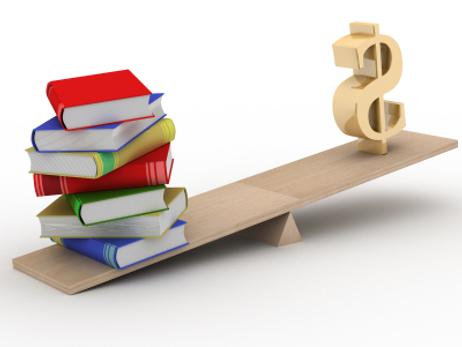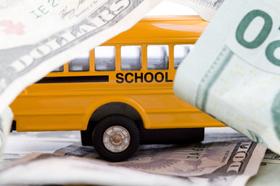One of the primary factors used to assess the quality of public education in our country is the amount of money that is pumped into the educational system by individual states. In light of President Obama's nationwide contest for funding, dubbed "Race to the Top," funding of public schools has become of even greater interest.
A recent study of school funding found that while a handful of states do reasonably well in getting funding to the districts that need it most, others are sorely lacking, putting low-income students at an even bigger disadvantage when it comes to their education and future.
This TEDTalk looks at the dilemma of public school funding.
About the Study
The recent study, titled, "Is School Funding Fair? A National Report Card," was authored by David Sciarra, executive director, and Daniel Farrie, research director, of the Education Law Center in New Jersey, and Bruce Baker of Rutgers University Graduate School of Education.
The report looked at all 50 states and rates school funding fairness on the following factors:
- Funding level
- Funding distribution
- State fiscal effort
- Public school coverage
The report uses the detailed analysis of these factors to determine which states exercised equality in their funding efforts, assuring that the school districts that needed the funding most were the top priority for their states.
According to a report in Daily Finance, the study looked specifically at the amount of funding per student, the percentage of the state's budget spent on public education, and the allocation of money to schools in high poverty areas.
The results of the study were somewhat disappointing, showing that numerous states do not make the grade when it comes to fairly funding the schools for which they are responsible.
This video from the National Education Association looks at the issue of school funding.
What the Numbers Show
The study found that just six states across the country perform reasonably well in all four factors listed above: New Jersey, Connecticut, Massachusetts, Vermont, Iowa, and Wyoming.
Sciarra, who wrote an op-ed for the Huffington Post, discussed in his article that these states have progressive funding that distributes the money where the need is greatest. However, Sciarra also notes that even in these high-ranking states, significant inequities still persist.
In addition, the study found the following:
- Four states received below-average ratings on all four criteria: Illinois, Louisiana, Missouri, and North Carolina.
- Most states have at least one area where they need to make significant improvements.
- Several states have high spending in education, but do a poor job of allocating sufficient funding to high-poverty areas.
- Maine, New Jersey, and Vermont spend the highest percentage of their economic activity on education, while Delaware, South Dakota, Louisiana, and Tennessee spend the least.
- Some states actually allocate less funding to high-poverty districts than to wealthy districts, including New Hampshire, Illinois, New York, and Pennsylvania.
The findings suggest that school districts with a high number of disadvantaged students are simply not receiving the necessary funding to level the playing field for those students.
In an article in the Washington Post, Valerie Strauss makes note of the fact that while many "reformers" dismiss the idea that poverty impacts student achievement, the general consensus is that there are many complex issues involving poverty, home life, and their effects on learning. Strauss cites a specific statement in the National Report Card that says, "Sufficient school funding, fairly distributed to districts to address concentrated poverty, is an essential precondition for the delivery of a high-quality education in the 50 states."
This TEDTalk discusses the opportunity gap in public education.
The Silver Lining
While the findings in the report may look somewhat dismal on the surface, Sciarra notes that there are some bright spots. Sciarra said on the Education Law Center website, "The National Report Card provides a much deeper understanding of the condition of school funding systems across the nation, and our sincere hope is that it will be used to push for fair and equitable school funding for all children, regardless of where they live."
Sciarra also stated, "Current school improvement efforts, such as attracting and retaining great teachers, demand that our states provide sufficient funding, distributed to account for student need." Other efforts, such as attracting high-quality preschool and kindergarten teachers, as well as offering extended learning opportunities through the schools, also require sufficient funding.
Co-author of the study, Dr. Bruce Baker, agreed. He also stated on the Education Law Center website, "This report provides policymakers, legislators and concerned citizens with the information they need to assess their state's level of effort and advocate for fair school funding."
If all students are to perform well, they must all be given equal access to the high quality of education required to help them achieve both during their years of schooling and beyond.
U.S. Public Education Spending Statistics (2007-2018)
Report Highlights. Public education spending in the United States falls short of global benchmarks and lags behind economic growth.
- K-12 schools spend $612.7 billion, or $12,612 per pupil, annually.
- Federal, state, and local governments spend $720.9 billion, or $14,840 per pupil, to fund K-12 public education.
- The federal government provides 7.7% of funding for public education; state and local governments provide 46.7% and 45.6% of public education funds, respectively.
- The United States spends an average of $15,908 per pupil on postsecondary education and $33,063 per pupil on graduate and postgraduate education.
- The nation’s gross domestic product (GDP) grows 71.6% faster than public education spending.
Questions? Contact us on Facebook. @publicschoolreview













